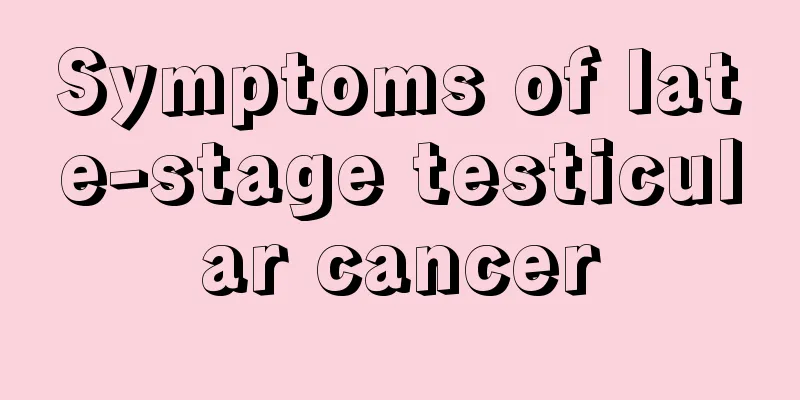What are the symptoms of cerebral blood vessel obstruction

|
The human brain is the most important because it controls other organs. However, blood diseases are very serious, especially cerebrovascular diseases, which are caused by dietary reasons or complications from other diseases. It usually causes cerebrovascular disease. The blockage of cerebral blood vessels is caused by blood clots. If you eat fish and meat for a long time, it is easy to cause blood clots. But what are the symptoms of cerebral vascular obstruction? Cerebrovascular obstruction, also known as cerebral thrombosis, refers to the formation of blood clots due to pathological changes in the walls of arteries supplying the brain inside and outside the skull, caused by slow blood flow, changes in blood composition or increased blood viscosity, leading to vascular occlusion. If it is not too serious and is treated properly, it can be cured. The most common cause of cerebral vascular blockage (cerebral thrombosis) is atherosclerosis, and diabetes, hyperlipidemia and hypertension can accelerate its development. This disease is more common in elderly people over 50 to 60 years old with arteriosclerosis. In your daily diet, you should pay special attention to eating less salt, light food, more vegetables, less animal meat, and more fish. symptom (1) General symptoms: This disease is more common in elderly people over 50 to 60 years old with arteriosclerosis, some of whom have a history of diabetes. Symptoms often occur when the patient is at rest or sleeping, and gradually reach a peak within 1 to 3 days. Some patients have had one or more transient ischemic attacks before the onset of the disease. Except for severe cases, symptoms gradually reach a peak within 1 to 3 days, consciousness is usually clear, and there is no obvious increase in intracranial pressure. (ii) Localized neurological symptoms of the brain: They vary greatly and are related to the degree of vascular occlusion, the size and location of the occluded blood vessels, and the quality of the collateral circulation. 1. Internal carotid artery system. (1) Internal carotid artery system: Hemiplegia, hemisensory disturbance, hemianopsia and psychiatric symptoms are the most common. The dominant half of the lesion also has varying degrees of aphasia, apraxia and agnosia. There is also primary optic atrophy on the lesion side, characteristic blindness of the affected eye accompanied by contralateral hemiplegia called crossed amaurosis, Horner's sign, oculomotor nerve palsy, and decreased retinal artery pressure. (2) Middle cerebral artery: the most common. When the main trunk is blocked, there will be three hemiplegia symptoms, and when the dominant hemisphere is affected, there will also be aphasia. (3) Anterior cerebral artery: Since the anterior communicating artery provides collateral circulation, proximal blockage may be asymptomatic; when peripheral branches are affected, the medial surface of the frontal lobe is often invaded, and paralysis is mainly in the lower limbs, which may be accompanied by cortical sensory disorders and urinary disorders in the lower limbs; deep perforating branch blockage affects the anterior branch of the internal capsule, often resulting in central facial and tongue paralysis and mild paresis of the upper limbs. When bilateral anterior cerebral artery occlusion occurs, mental symptoms may occur accompanied by bilateral paralysis. 2.Vertebral-basilar arterial system. (1) Posterior inferior cerebellar artery syndrome: It causes infarction of the dorsolateral medulla oblongata, resulting in vertigo, nystagmus, glossopharyngeal and vagus nerve paralysis on the affected side, cerebellar ataxia and Hroner's sign, and decreased or absent sensation in the body and limbs on the opposite side of the face with the affected side. (2) Paracentral artery: very rare. (3) Anterior inferior cerebellar artery: vertigo, nystagmus, both eyeballs staring toward the side opposite to the lesion, tinnitus and deafness on the lesion side, Horner's sign and cerebellar ataxia, decreased or absent sensation on the lesion side of the face and contralateral limbs. (4) Basilar artery: high fever, coma, pinpoint pupils, limb flaccidity and medullary paralysis. Acute complete occlusion can quickly endanger the patient's life, and some patients may experience locked-in syndrome. (5) Posterior cerebral artery: manifests as occipital-parietal syndrome, with hemianopsia and transient visual impairment such as amaurosis being the most common symptoms. In addition, there may also be body image disorders, agnosia, and apraxia. |
<<: Symptoms of abnormal neurological function regulation
>>: Making honey and milk handmade soap
Recommend
What to do if garlic is infested with worms
In fact, there are many things to pay attention t...
Common symptoms of bone cancer in life
In life, the symptoms of bone cancer are also rel...
How to effectively treat gallbladder polyps
The treatment of gallbladder polyps is better thr...
Why does nosebleed occur due to brain cancer
Can brain cancer cause nosebleeds? In any case, a...
How to determine if there is formaldehyde in the home
We all know that formaldehyde is a substance that...
What is the reason for sunken temples
Many people observe their faces in daily life and...
Which fruit is the best for reducing internal heat?
Fruit is a favorite choice for many people. This ...
What is the cure rate of breast cancer
Breast cancer is a malignant tumor that occurs in...
How to remove blood stains from clothes
Many people may get blood stains on their clothes...
Liquor cures colds
As a popular drink since ancient times, liquor ha...
How to solve the problem of bad breath caused by indigestion?
Food is a necessary substance for people to obtai...
Is it good to take health supplements regularly?
Nowadays people are very concerned about health. ...
How to store edamame in shell
Many times, shelled edamame are actually sold in ...
How to treat and relieve acne between eyebrows?
There are many factors that cause people to get a...
What are the methods for treating urinary incontinence
Urinary incontinence means that a person's ur...









